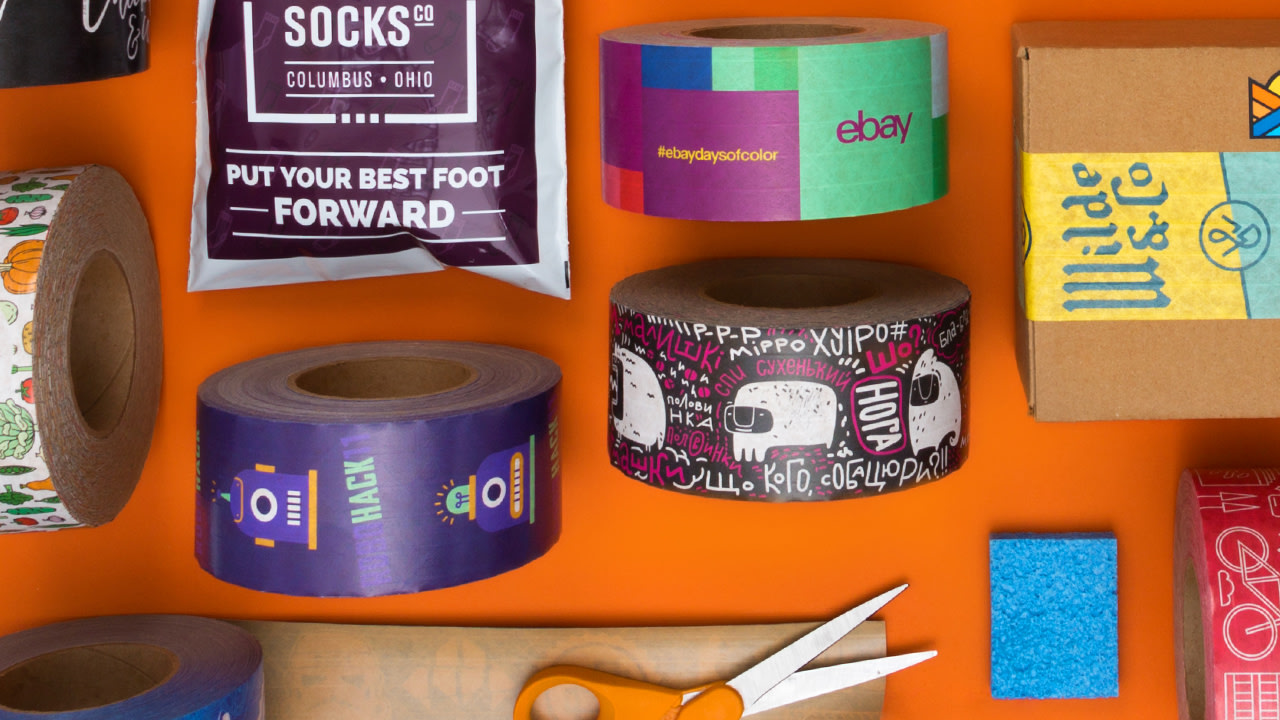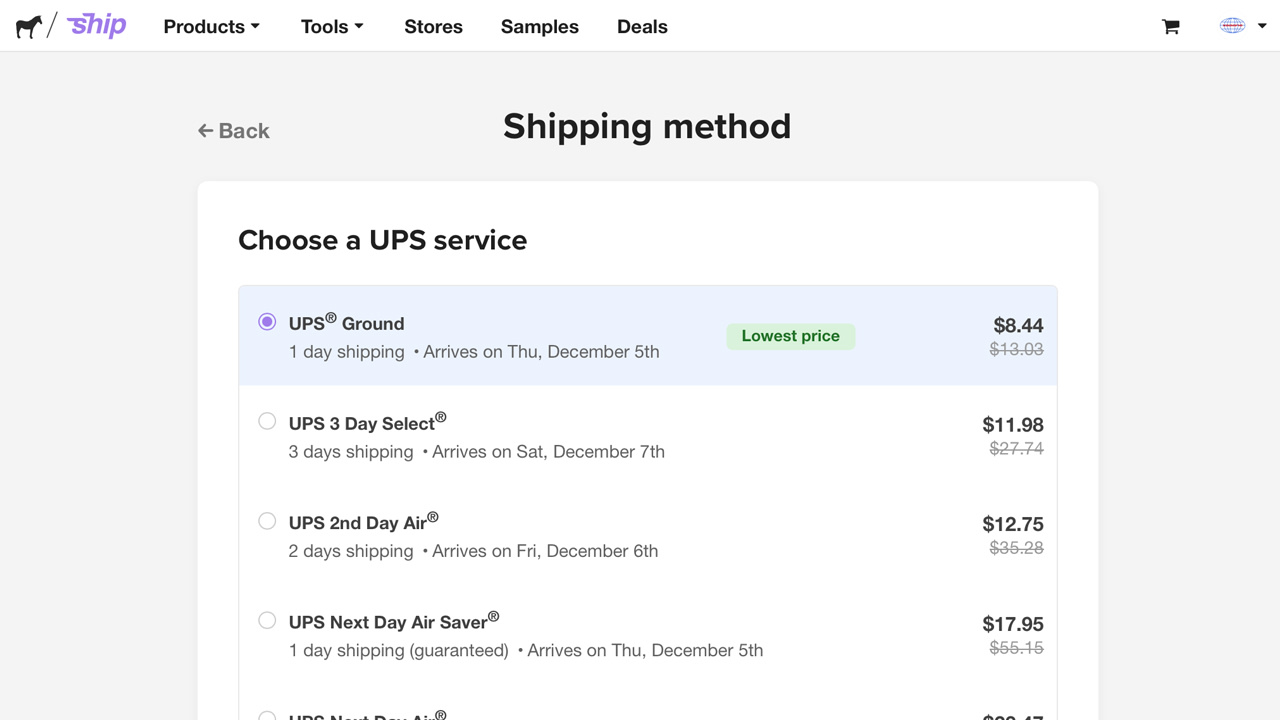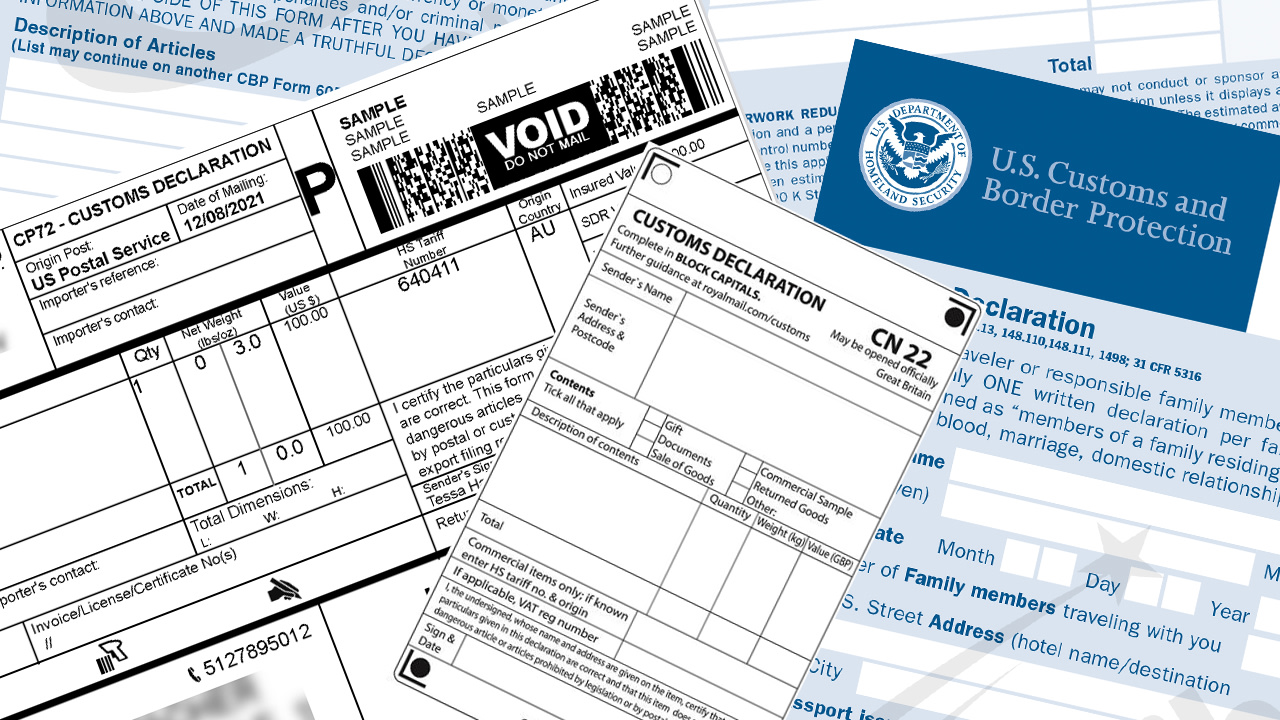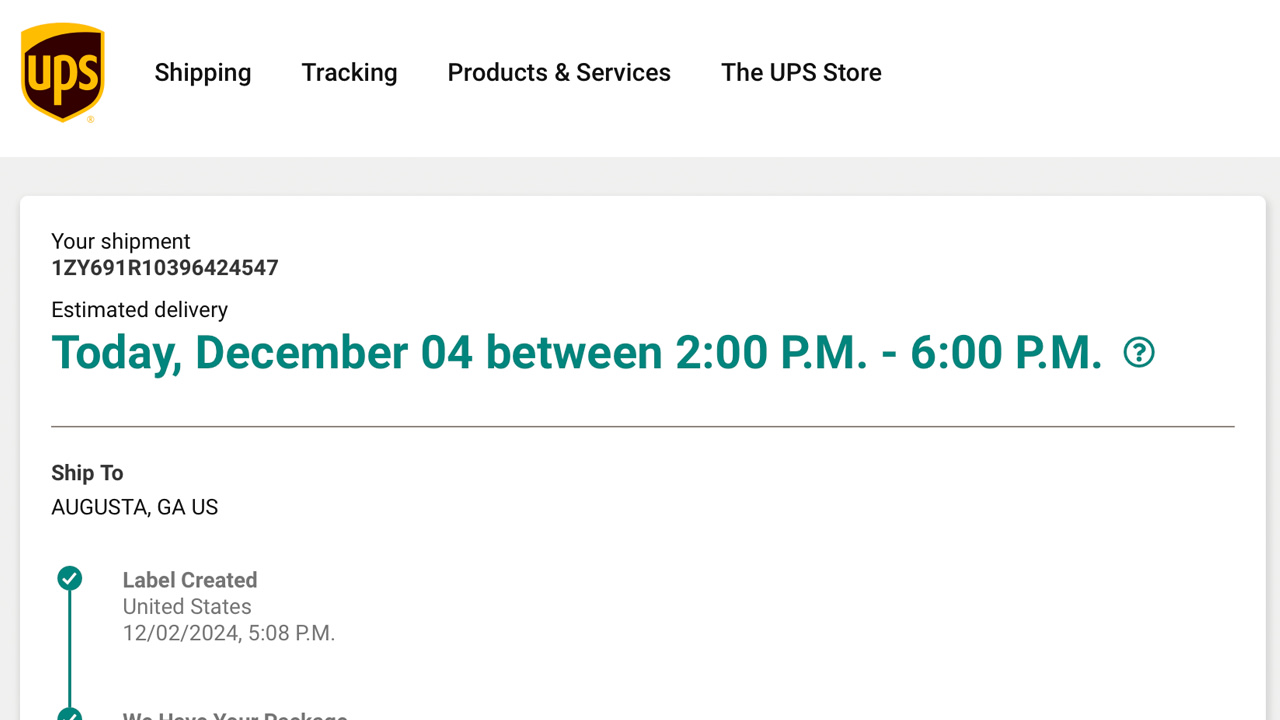Frete para pequenas empresas: Guia completo
Publicado por Sticker Mule em
O frete é o fundamento das pequenas lojas online. Tanto para empreendedores do e-commerce, criativos que vendem artesanato ou provedores de serviço que fornecem materiais de frete para clientes, as boas práticas de frete podem economizar dinheiro, agilizar suas operações e melhorar a satisfação do cliente.
A Sticker Mule é uma pequena empresa, assim como a sua. Muitos dos nossos produtos e serviços nasceram de um pensamento muito simples: "Alguém deveria criar algo desse jeito". E depois percebemos que este alguém podia ser nós mesmos.
Se você já fez um pedido personalizado conosco, você terá visto que ele veio em um envelope bolha ou envelope de segurança da Sticker Mule, ou então em uma caixa selada com nossa fita para embalagem personalizada. E, se o seu pacote chegou via UPS, é porque alguém na Sticker Mule usou o noso próprio serviço, o Ship — uma solução que garante uma experiência mais agilizada (e mais em conta) do que a própria UPS.
Temos orgulho em criar os melhores produtos para nosso uso interno e, depois, compartilhá-los com você. Com o passar dos anos, enviamos milhares de pacotes, adquirindo com o processo uma expertise valiosa. Agora, queremos comunicar um pouco do nosso conhecimento com você.
A seguir você pode conferir nosso guia sobre o frete para pequenas empresas, onde compartilhamos dicas sobre a escolha de transportadoras, a otimização de embalagens e sugestões úteis sobre ferramentas e serviços como os produtos de frete da Sticker Mule, que podem simplificar o processo.
1. Entenda suas necessidades de frete
Antes de considerar transportadoras e embalagens, avalie suas necessidades específicas de frete. Esta fundação o ajudará a criar um processo eficiente e em conta.
Tamanho e peso dos produtos
Itens pequenos e leves, como adesivos ou joias, costumam ser mais baratos para enviar, mas você precisará garantir que eles sejam embalados com segurança para evitar dobras ou danos. Por outro lado, produtos maiores ou mais pesados, como decoração ou ferramentas, podem exigir embalagem reforçada e uma seleção cuidadosa da transportadora.
Frequência do frete
Se você faz envios diários ou atende a grandes volumes, considere automatizar seus processos com software de remessa ou descontos de transportadoras. Para remetentes ocasionais ou sazonais, concentre-se em soluções flexíveis que não exijam compromissos de longo prazo.
Locais de frete
A remessa doméstica tende a ser mais simples e menos dispendiosa, mas se você planeja fazer remessas internacionais, também é preciso levar em conta a documentação alfandegária, impostos e possíveis atrasos na entrega.
Depois de entender esses princípios básicos, você já pode começar a criar uma estratégia que funcione para sua empresa específica.
2. Escolhendo as transportadoras certas
Os fornecedores de remessas variam muito em suas ofertas, o que torna essencial escolher os que melhor se alinham com suas necessidades. Aqui está um detalhamento das opções populares:
USPS (Serviço Postal dos Estados Unidos)
Perfeita para pacotes pequenos e leves, a USPS oferece serviços como o First-Class Mail para itens com menos de 1 libra (0,45 kg) e caixas Priority Mail com custo fixo para remessas que precisam de entrega mais rápida. Suas opções de taxa fixa são ideais se seus produtos couberem em caixas de tamanho padrão.
UPS (United Parcel Service)
Conhecida pela confiabilidade e pelo rastreamento robusto, a UPS funciona bem para pacotes maiores ou mais pesados. Seu serviço UPS Ground é uma solução econômica para remessas dentro dos EUA, especialmente para empresas de médio porte.
FedEx
Com uma ampla gama de serviços, a FedEx se destaca em remessas rápidas e entregas urgentes. Se a sua empresa promete entrega no dia seguinte ou em dois dias, a FedEx é uma escolha sólida.
DHL
Especializada em remessas internacionais, a DHL oferece cobertura global abrangente. Se a sua base de clientes engloba vários países, a experiência da DHL em lidar com a alfândega pode economizar tempo e dinheiro.
Se você estiver enviando dentro dos Estados Unidos, recomendamos que você compare as taxas de entrega da UPS do [Ship da Sticker Mule] (https://www.stickermule.com/br/ship) com as das principais transportadoras e outros revendedores da UPS. Você descobrirá alguns dos preços mais baixos disponíveis — sem taxas ocultas, compromissos de longo prazo ou pressão para adquirir serviços adicionais de remessa comercial.
3. Elementos básicos da embalagem: Proteção e branding
A embalagem não só protege seus produtos durante o transporte, mas também opera como uma oportunidade de divulgação da sua marca. Veja como equilibrar funcionalidade e estética.
Materiais:
Itens leves, como adesivos, devem ser enviados em envelopes rígidos ou caixas de correio acolchoadas para proteger contra dobras. Itens frágeis ou maiores podem exigir caixas de papelão ondulado com amortecimento adicional, como plástico bolha ou papel de embalagem. Para produtos não frágeis, você pode usar os envelopes de segurança personalizados da Sticker Mule, que combinam durabilidade, leveza e branding de primeira.
Branding:
Um bom branding ajuda a criar uma experiência memorável quando o comprador abre o pacote. Adicione seu logotipo ou designs aos seus envelopes ou lacre suas caixas com fita adesiva da sua marca. A Sticker Mule oferece fita para embalagem personalizada que sela sua caixa com segurança, dá um toque profissional e promove sua marca em cada etapa do processo.
Proteção:
Use inserções de papelão, almofadas de ar ou folhas de espuma para evitar que os produtos se desloquem durante o transporte. Para itens baseados em papel, como adesivos, uma placa de apoio rígida dentro do envelope é uma maneira simples de evitar danos.
Investir em materiais de qualidade desde o início pode reduzir o custo que você sofre com devoluções ocasionadas por danos, além de deixar uma impressão duradoura nos seus clientes.
4. Calculando o custo do frete
O custo do frete varia de acordo com vários fatores. Compensa fazer uma estimativa precisa destes fatores, evitando surpresas e garantindo preços competitivos:
Peso e dimensões
As transportadoras baseiam seus preços no peso e tamanho de seus pacotes. Ao superestimar estas medidas, você acaba pagando demais; se subestimar, sua embalagem pode acabar atrasada ou ser devolvida. Invista em uma balança de frete e meça cada pacote para evitar erros. Chatbots como o ChatGPT ou Grok podem ser uma forma rápida de ajudar com conversões de medidas usadas nos países anglófonos, como libras e onças, caso necessário.
Zonas de frete
As transportadoras dividem localizações entre zonas com base na sua distância da origem. Quanto mais longe for a remessa, maior o custo do frete. Aqui, ajuda ter tabelas com as zonas da sua transportadora, ajudando você a planejar de acordo.
Opções de taxa fixa
Se você envia frequentemente itens de tamanhos e pesos similares, uma forma de simplificar seus preços é enviar caixas de frete ou envelopes com taxa fixa. Por exemplo, a taxa fixa da USPS Priority Mail funciona bem para pequenas empresas que enviam itens com menos de 70 libras (38 kg). Mas atenção: é fácil se acostumar com os pacotes de taxa fixa, mas acabar descobrindo mais tarde que você esteve pagando mais do que poderia se tivesse usado uma taxa com base no peso calculado.
O Ship da Sticker Mule permite que pequenas empresas imprimam etiquetas descontadas da UPS Ground, oferecendo economias significativas para frete doméstico (nos EUA) a partir de apenas U$ 4,95.
5. Oferecendo opções de frete aos clientes
Seus clientes gostam de flexibilidade nas opções de remessa. Ao oferecer uma mistura de opções, você melhora a satisfação do cliente e aumenta suas conversões.
Frete padrão
Esta costuma ser a opção mais em conta e mais usada. O First-Class Mail da USPS é perfeito para itens leves como adesivos, enquanto que o UPS Ground funciona bem para pacotes mais pesados.
Envio rápido
Para clientes com pressa, a opção de entrega em dois dias ou no dia seguinte através da FedEx ou UPS pode tornar seu negócio mais competitivo.
Frete grátis
Muitos clientes já esperam o frete grátis, especialmente para pedidos acima de um certo valor. Inclua o custo do frete ao precificar seus produtos ou defina limites (por ex., frete grátis para pedidos acima de US$ 50) para manter sua rentabilidade.
A transparência é essencial — seja transparente em relação a prazos e custos de entrega no checkout, ganhando a confiança dos seus clientes.
6. Dicas para frete internacional
Expandir sua base de clientes para um nível global pode ser um divisor de águas para seu negócio, mas exige um planejamento cuidadoso.
Documentação alfandegária
Inclua descrições e valores precisos para seus produtos nos formulários para a alfândega, evitando atrasos ou cobranças adicionais.
Impostos e taxas
Seja claro com seus clientes sobre potenciais taxas de importação. Muitas empresas oferecem a opção de fazer um pré-pagamento destas taxas, simplificando o processo para os compradores.
Durabilidade das embalagens
Envios internacionais demoram mais e passam por mais manuseio, pelo que é bom certificar-se de que sua embalagem seja segura. Os envelopes personalizados da Sticker Mule são resistentes às intempéries e duráveis, o que os torna ideais para entregas de longa distância.
Escolha transportadoras com redes internacionais robustas, como DHL ou USPS International, para garantir uma entrega tranquila.
7. Automatizando e rastreando envios
Simplifique suas operações de frete com ferramentas que economizam tempo e melhoram sua precisão:
Software de frete
Plataformas como Pirate Ship, ShipStation e o Ship da Sticker Mule podem ajudar a facilitar a impressão de etiquetas, gerenciar envios e rastrear pacotes em um só lugar.
Processamento em lotes
Para remetentes de alto volume, imprimir etiquetas em lote ajuda a economizar muito tempo. A maioria dos softwares de envio inclui essa funcionalidade.
Rastreamento em tempo real
Sempre forneça números de rastreamento aos clientes para que possam acompanhar seus pacotes e evitar consultas desnecessárias.
A automação libera seu tempo para se concentrar no crescimento do seu negócio. ##8. Criando uma ótima experiência para o cliente O envio é uma extensão da sua marca. Um processo eficiente pode transformar compradores de primeira viagem em clientes fiéis. Vejamos como.
Estimativas precisas de entrega
Comunique claramente o tempo da remessa durante o checkout.
Atualizações proativas
Use ferramentas de rastreio para manter seus clientes informados sobre seus pedidos.
Unboxing memorável
Use elementos de marca, como fita para embalagem ou adesivos para criar um unboxing mais especial. As soluções para embalagem personalizada da Sticker Mule, entre as quais envelopes, fita para embalagem e etiquetas, podem melhorar sua apresentação sem exigir muito esforço da sua parte.
Conclusão
O frete é mais do que simplesmente mover produtos do ponto A para o ponto B. É uma parte essencial do seu negócio que pode impactar a satisfação do cliente, a reputação da sua marca e seu lucro. Ao escolher bem suas transportadoras, otimizar as embalagens e aproveitar ferramentas como o Ship e as embalagens personalizadas da Sticker Mule, você agiliza seu processo e ao mesmo tempo se destaca da concorrência.
Gaste um tempo para avaliar suas práticas de frete hoje mesmo. Ao fazer isso, você prepara sua empresa para operações mais eficientes e gera clientes mais felizes amanhã.




